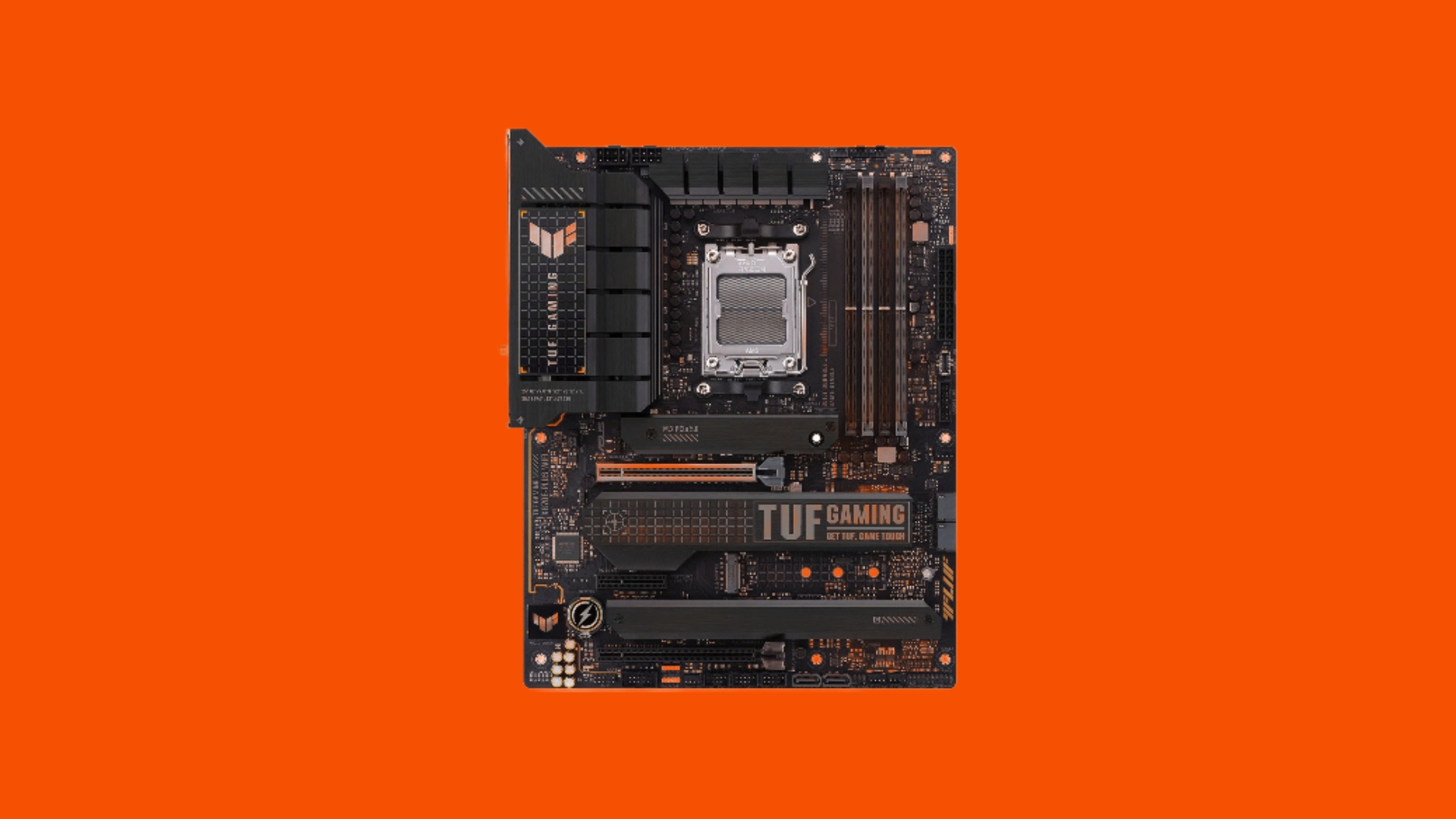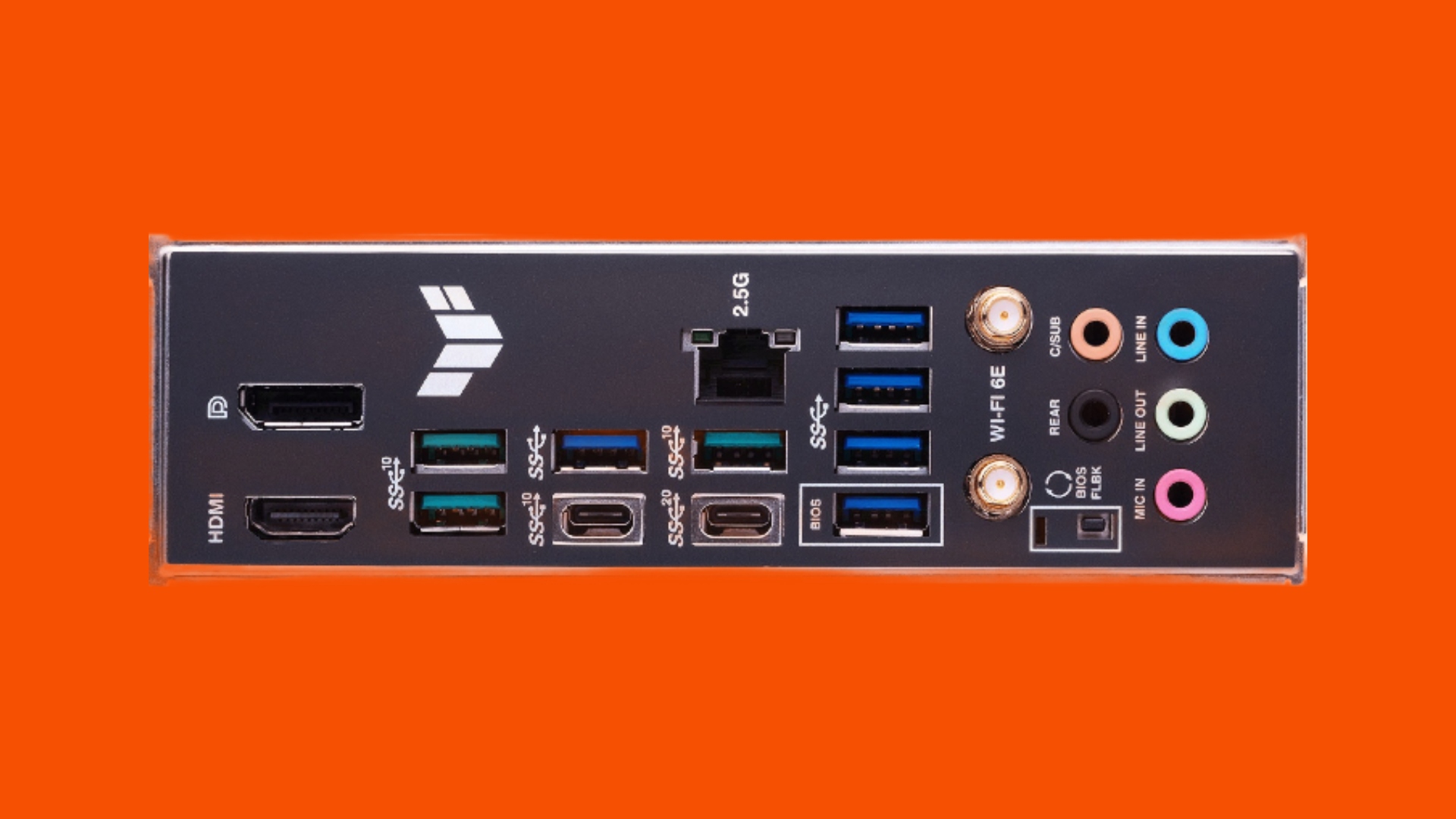Our Verdict
It is nonetheless a bit costly, however the TUF Gaming X670E-Plus WiFi affords a strong function set in comparison with different Socket AM5 boards at this value, in addition to a good EFI and software program setup.
- Good function set in contrast with equally priced X670E boards
- PCIe 5 graphics and storage assist
- Loads of cooling-related options
- Costly
- Comparatively excessive VRM and M.2 temperatures
- No USB 4 assist
Asus’ TUF-branded motherboards used to characterize the corporate’s value-focused vary, however with a value over $300, you’d have a troublesome time describing the TUF Gaming X670E-Plus WiFi as low cost. This Socket AM5 motherboard additionally prices round $60 greater than the Z690-based equal, which advantages from additionally having DDR4 reminiscence assist, whereas utilizing any AMD Socket AM5 motherboard requires you to purchase new DDR5 reminiscence.
At Customized PC, we’ve been reviewing and overclocking the most recent motherboards since we first launched in 2003, so we all know precisely what to search for when it comes to structure, options, efficiency, and overclocking skills.
Why you’ll be able to belief our recommendation ✔ At , our consultants spend hours testing {hardware} and reviewing video games and VPNs. We share trustworthy, unbiased opinions that can assist you purchase one of the best. Discover out how we take a look at.
Specs
Asus Gaming X670E-Plus WiFi specs:
| Dimensions | 305 x 244mm |
| Chipset | AMD X670E |
| CPU socket | AMD Socket AM5 |
| Reminiscence assist | 4 slots: max 64GB DDR5 (as much as 6400MHz) |
| Sound | 8-channel Realtek S1220A |
| Enlargement slots | One 16x PCIe 5, one 16x PCIe 4, one 4x PCIe 4 |
| Networking | 1 x Realtek 2.5Gbps LAN, 802.11ax Wi-Fi |
| Cooling | Eight 4-pin fan headers, VRM heatsinks, M.2 heatsinks, thermal probe header |
| Ports | 4 x SATA 6Gbps, 1 x M.2 PCIe 5, 2 x M.2 PCIe 4, 1 x M.2 PCIe 3, 1 x USB 3.2 Gen 2×2 Sort-C, 1 x USB 3.2 Gen 2 Sort-C, 3 x USB 3.2 Gen 2, 5 x USB 3, 1 x USB 3.2 Gen 2 Sort-C header, 1 x HDMI, 1 x DisplayPort, 3 x encompass audio out |
Options
It’s just a little disappointing to don’t have any USB 4 assist on the TUF Gaming X670E-Plus WiFi, in addition to a basic lack of onboard overclocking and testing instruments. Fortunately, although, in most different areas, this is likely one of the most feature-packed TUF motherboards we’ve seen.
You get a quartet of M.2 ports, with the first connector sporting PCIe 5 SSD assist, two ports capped at PCIe 4, and the ultimate one catering for PCIe 3 and SATA M.2 SSDs. The first 16x PCIe slot can also be PCIe 5 suitable. You get a good quantity of futureproofing, then, particularly as Socket AM5 is prone to have a fairly lengthy lifespan too.
There are some cooling-focused options too, similar to a devoted customized water-cooling pump header that may dish out as much as 36W of energy, and there are eight 4-pin energy headers in complete. What’s extra, three of the 4 M.2 ports provide heatsinks.
You even get a thermal probe enter. This can be utilized with 2-pin thermal probes to inform your motherboard EFI (or fan management software program) to regulate fan speeds based mostly on a temperature enter, slightly than the CPU or VRM temperatures.
That is helpful when you’re water-cooling your system, enabling you to regulate fan speeds based mostly on the coolant temperature, or when you’re including further followers to your graphics card cooler. The EFI additionally enables you to change the temperature inputs for case followers to your graphics card.

In the meantime, two giant heatsinks cool the VRMs, that are made up of a 14+2 array of teamed energy phases rated at 70A, though there’s no heatpipe linking them or further followers.
Over the again of the VRMs, on the rear I/O panel, you’ll discover connectors for two.5 Gigabit Ethernet, 802.11ax Wi-Fi, and a useful tally of eight Sort-A USB ports, all of that are USB 3 or sooner. Whereas there’s no USB 4 assist, you do get a pair of Sort-C ports providing USB 3.2 Gen 2×2 speeds, and one other one which’s restricted to only USB 3.2 Gen 2 velocity.
In contrast to the mini-ITX Asus ROG Strix X670E-I Gaming WiFi, there’s a near-full array of audio ports from the Realtek S1220 onboard audio on the again too, though there’s no optical output. You additionally get DisplayPort and HDMI outputs for tapping into the onboard graphics with Ryzen 7000-series CPUs too.

Do you have to purchase the board sooner or later and wish to drop in a future CPU that’s not supported by the unique BIOS, you can even replace the board and not using a suitable CPU utilizing the included USB BIOS FlashBack function, which might be very useful.
One small grievance is that we’d have appreciated to see six SATA ports on the PCB as an alternative of 4, however when you’re leaping on the Socket AM5 bandwagon you’re extra prone to be making use of the M.2 ports, and 4 continues to be loads for most individuals.
There’s additionally a tiny quantity of RGB lighting emanating from the underside proper of the board, which hasn’t been a spotlight of TUF boards prior to now, and there are each 3-pin and 4-pin RGB headers on the board to increase your lighting system additional.
Efficiency
After our ten-minute load take a look at with a Ryzen 9 7950X, the X670E-Plus WiFi’s VRMs hit an inexpensive temperature of 66°C, though after a couple of minutes, the CPU did drop from an all-core increase frequency of over 5GHz to round 4.9GHz, the place the temperature stabilized.
The M.2 temperature with our Kingston Fury Renegade PCIe 4 SSD utilizing the most important heatsink on the backside of the board was cheap at 66°C, after dealing with prolonged back-to-back runs of CrystalDiskMark, which is properly away from thermal throttling, though we’ve got seen cooler outcomes.
Our system drew a peak of 358W from the wall with this motherboard put in, which was about 15W lower than the ASRock X670E Taichi. In the meantime, the RealBench system rating at inventory velocity was practically equivalent to that of the Asus ROG Strix X670E-I Gaming WiFi at 489,953 factors.
One spotlight of this board can also be the efficiency of the on-board Realtek S1120A audio system, which recorded a noise stage of simply -111.1dBA in RightMark Audio Analyzer together with a dynamic vary of 111.3dBA and complete harmonic distortion (THD) of 0.0057.
Organising the board within the EFI was a easy course of as properly, with Asus’ system offering easy-access choices for enabling Resizable BAR, for instance, it fired up the primary time once we enabled the AMD EXPO profile for our DDR5 6000MHz reminiscence. Nevertheless, as with most Socket AM5 boards, you’ll want to sit down by means of prolonged black display boot instances at first, whereas the board units itself up to your specific {hardware} configuration.
Conclusion
At a value of round $330, the Asus TUF Gaming X670E-Plus WiFi continues to be an costly motherboard in contrast with earlier motherboard costs, and when you’re searching for a less expensive improve path, the Intel route presents a less expensive choice.
Nevertheless, when you’re eager to leap on the Socket AM5 bandwagon, the TUF Gaming X670E-Plus WiFi has a barely higher function set than the pricier ASRock X670E Metal Legend, in addition to a greater EFI and software program. The Asus board’s M.2 and VRM temperatures weren’t fairly as little as these of the ASRock, board, however they’re nonetheless nice, and the Asus additionally affords some useful cooling options when you’re planning to make use of a customized water-cooling loop.
If this motherboard isn’t proper to your wants, try our full information to one of the best gaming motherboard for extra choices at a variety of costs.

